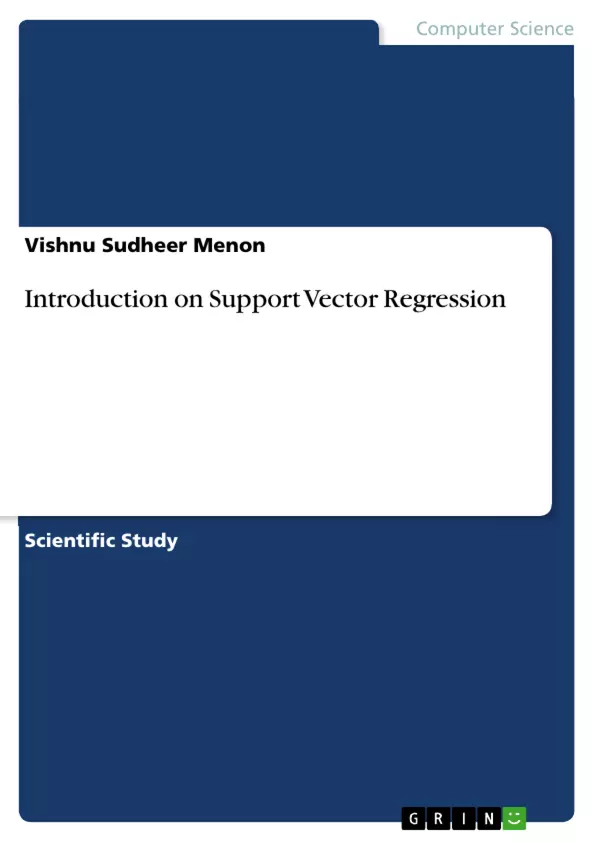Through this paper I wish to to give an introduction about support vector regression and also its various modes of usage.We will be seeing how this support vector regression is formulated and how its varies alternatives are derived.
Inhaltsverzeichnis (Table of Contents)
- Introduction
- The need of a flat function
- A Brief Introduction of Emperical Risk Minimisation
- Support Vector Regression(ε― SVR)
- To compute b
- v- Support Vector Regression
Zielsetzung und Themenschwerpunkte (Objectives and Key Themes)
This paper provides an introduction to Support Vector Regression (SVR) and its various applications. It explores the formulation of SVR and explains the derivation of its different alternatives.
- Support Vector Regression (SVR) and its applications in forecasting trends, such as stock market fluctuations and time series prediction.
- The concept of primal and dual variables in optimization problems and their significance in solving SVR.
- The importance of flatness in function design and its role in achieving good generalization in SVR.
- The concept of empirical risk minimization and its application in SVR.
- The introduction and formulation of ε-SVR, including the optimization problem and Lagrangian expression.
Zusammenfassung der Kapitel (Chapter Summaries)
- Introduction: This chapter introduces Support Vector Regression (SVR) as a forecasting method for trends like stock market fluctuations and time series prediction. It also introduces the concepts of primal and dual variables in optimization problems.
- The need of a flat function: This section discusses the importance of flatness in function design for achieving good generalization in SVR. It explains how flatness is related to complexity and training errors.
- A Brief Introduction of Emperical Risk Minimisation: This section explores the concept of empirical risk minimization and how it helps to reduce the risk in SVR by replacing the Risk function with the Emperical Risk.
- Support Vector Regression(ε― SVR): This chapter introduces the modified method of ε-SVR, where the function is characterized as a tube of width 'ε'. It explains how errors within and beyond the tube are handled.
- To compute b: This section describes the method of finding the value of b in SVR using the Kaush-Kaun-tucker conditions. It also discusses the observations related to support vectors.
- v- Support Vector Regression: This chapter introduces the v-SVR approach, where ε is a variable and is multiplied with another variable v. It explains how this approach adjusts the width of the tube and improves accuracy.
Schlüsselwörter (Keywords)
Support Vector Regression, forecasting, trends, stock market, time series prediction, primal variables, dual variables, flatness, generalization, empirical risk minimization, ε-SVR, v-SVR, Lagrangian expression, optimization problem, support vectors.
- Citation du texte
- Vishnu Sudheer Menon (Auteur), 2015, Introduction on Support Vector Regression, Munich, GRIN Verlag, https://www.grin.com/document/294791



